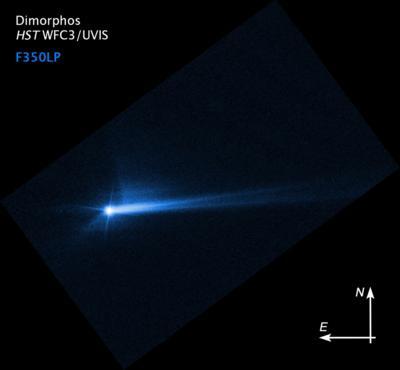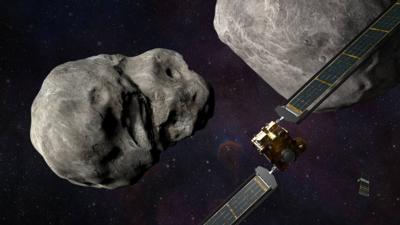Fri, Oct 14, 2022
Sci-Fi Program Proves Kinetic Alteration of Moving Bodies in Space Possible With Satellite Intervention
NASA's DART program was successful, as the administration confirmed after weeks of analysis following its Double Asteroid Redirection Test.

The program used the asteroid Dimorphos as a case study in the real-world efficacy of a kinetic impact on redirecting the path of a transitory celestial object, sending up the DART satellite on a collision course that saw it swing around the asteroid's larger sibling Didymos before impacting the target. The result? Dimorphos' orbit around the larger asteroid has been shortened by 32 minutes, shortening the 11 hour, 55-minute orbit down to 11 hours 23 minutes (with some wiggle room of 2 minutes either way).
Prior to impact, NASA established a metric for success, saying that a functional orbital period change would need to be at least 73 seconds, meaning DART went far and above the required benchmark 25 times over. The team is still tracking Didymos and Dimorphos, watching to see how the asteroids react as more time passes, in addition to the mass of ejected rock and debris that resulted from the 14,000 mph collision.

“This result is one important step toward understanding the full effect of DART’s impact with its target asteroid” said Lori Glaze, director of NASA’s Planetary Science Division at NASA Headquarters in Washington. “As new data come in each day, astronomers will be able to better assess whether, and how, a mission like DART could be used in the future to help protect Earth from a collision with an asteroid if we ever discover one headed our way.”
“DART has given us some fascinating data about both asteroid properties and the effectiveness of a kinetic impactor as a planetary defense technology,” said Nancy Chabot, the DART coordination lead from the Johns Hopkins Applied Physics Laboratory (APL) in Laurel, Maryland. “The DART team is continuing to work on this rich dataset to fully understand this first planetary defense test of asteroid deflection.”
More News
Aero Linx: Model Aeronautical Association of Australia MAAA clubs are about fun flying, camaraderie and community. For over 75 years, the MAAA has been Australia’s largest fl>[...]
Touchdown Zone Lighting Two rows of transverse light bars located symmetrically about the runway centerline normally at 100 foot intervals. The basic system extends 3,000 feet alon>[...]
“Discovery and innovation are central to our mission at Virgin Galactic. We’re excited to build on our successful record of facilitating scientific experiments in subor>[...]
How To Get A Story On Aero-TV News/Feature Programming How do I submit a story idea or lead to Aero-TV? If you would like to submit a story idea or lead, please contact Jim Campbel>[...]
Student Pilot Reported That During Rotation, “All Of A Sudden The Back Of The Plane Kicked To The Right..." Analysis: The student pilot reported that during rotation, “>[...]
 ANN's Daily Aero-Linx (05.02.24)
ANN's Daily Aero-Linx (05.02.24) ANN's Daily Aero-Term (05.02.24): Touchdown Zone Lighting
ANN's Daily Aero-Term (05.02.24): Touchdown Zone Lighting Aero-News: Quote of the Day (05.02.24)
Aero-News: Quote of the Day (05.02.24) ANN FAQ: Contributing To Aero-TV
ANN FAQ: Contributing To Aero-TV NTSB Final Report: Cirrus Design Corp SR20
NTSB Final Report: Cirrus Design Corp SR20




